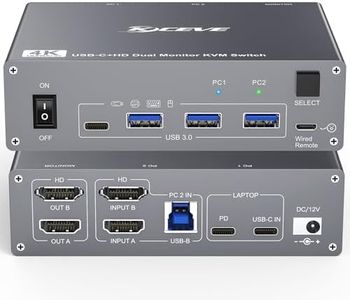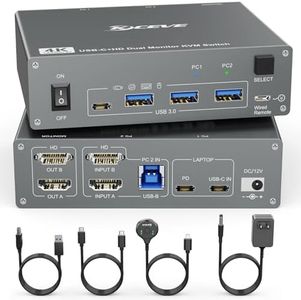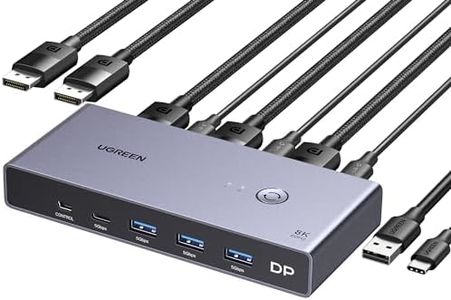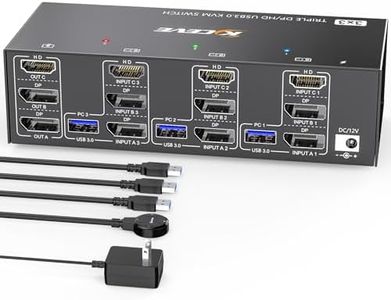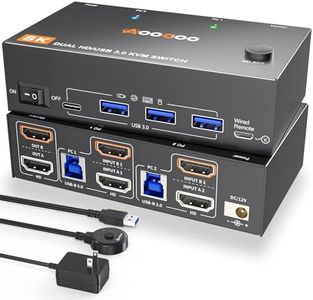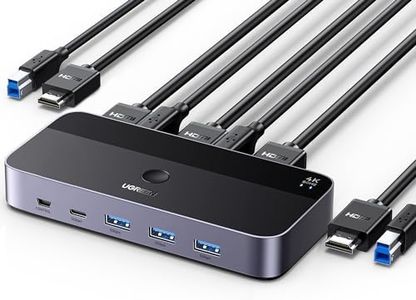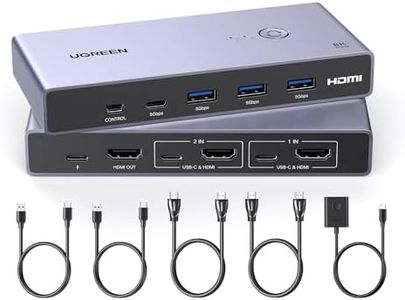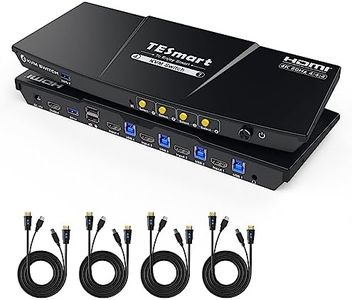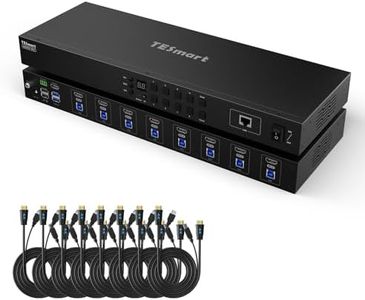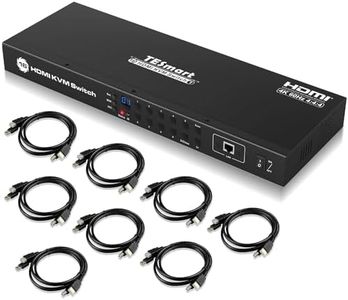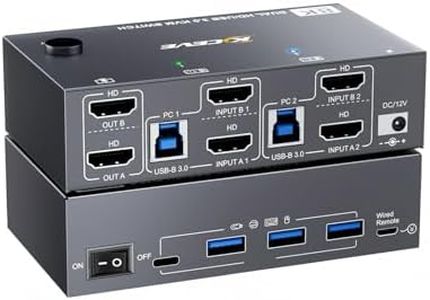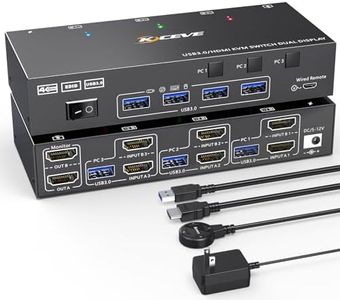We Use CookiesWe use cookies to enhance the security, performance,
functionality and for analytical and promotional activities. By continuing to browse this site you
are agreeing to our privacy policy
10 Best Kvm Switches
From leading brands and best sellers available on the web.Buying Guide for the Best Kvm Switches
Choosing the right KVM switch doesn’t have to be complicated. KVM stands for Keyboard, Video, and Mouse switch, and it’s a device that lets you control multiple computers from a single keyboard, monitor, and mouse. This is super useful if you have more than one computer and want to save space or easily switch between systems. The perfect KVM switch for you will depend on how many computers you need to connect, the type of connections your devices use, and extra features that might make your daily use smoother.Number of PortsThis refers to how many computers or devices you can connect to the KVM switch at one time. If you have just two computers, a 2-port switch will be enough. For three or four computers, you’ll need a 4-port switch, and so on. Think about your current needs and if you might add more computers later. It's often wise to get a switch with one more port than you currently need, so you have room to grow.
Connector Types (USB/PS2/HDMI/DisplayPort/VGA)KVM switches come with different types of connectors for both video and peripherals. Common video ports are HDMI, DisplayPort, DVI, and VGA, while keyboard/mouse connections could be USB or PS/2. You need to match these ports to those available on your computers and your monitor. For the best visual quality, HDMI and DisplayPort are most modern, while VGA and DVI are more common on older systems. For the keyboard and mouse, USB ports are standard. Check your existing hardware and choose a KVM switch that’s compatible with everything you plan to connect.
Resolution SupportThe resolution supported by a KVM switch determines how sharp and clear your display will be when using the switch. Switches may be limited to standard HD (1080p), higher resolutions like 1440p, or even up to 4K. If you have a high-resolution monitor or do work where image quality is important, make sure the KVM switch supports at least the maximum resolution of your monitor. If you use basic office monitors, most standard switches should be fine, but always match the switch capability with your display’s needs.
Switching MethodThis is how you toggle control between computers. Main methods include pressing a button on the KVM device, keyboard shortcuts (hotkeys), or even remote controls. Button switching is straightforward, while hotkey and remote switching can save you time if you’re frequently changing between computers. Consider how often you’ll need to switch: daily, occasionally, or all the time. If you switch very often, a hotkey or remote could make your life easier.
Peripheral Sharing (USB Hub or Audio Support)Some KVM switches allow sharing not just the keyboard, mouse, and monitor, but also other USB devices like printers or external drives, and even audio devices like speakers or microphones. If you need your accessories to work across all connected computers, look for a switch with extra USB ports and audio jacks. This is especially important if you regularly use things beyond the basic trio of keyboard, mouse, and monitor.
Power SourceKVM switches can be powered by the computers themselves (bus-powered) or with an external power adapter. Self-powered (bus-powered) models are convenient and reduce cable clutter, but sometimes aren’t as reliable for sharing more demanding peripherals. If you have several devices or want to ensure a stable connection, an externally powered switch might be the better choice.
CompatibilityNot every KVM switch works seamlessly with all operating systems or brands of computer. Some may have trouble with specialized keyboards, gaming mice, or certain Mac, Linux, or Windows configurations. Read the specifications and if possible, check compatibility lists to make sure the switch will work smoothly with your machines and input devices.

